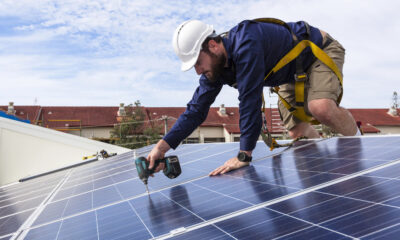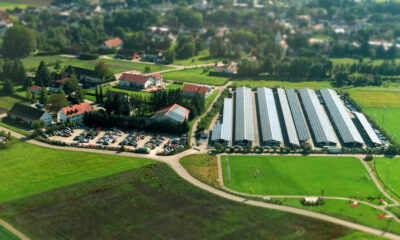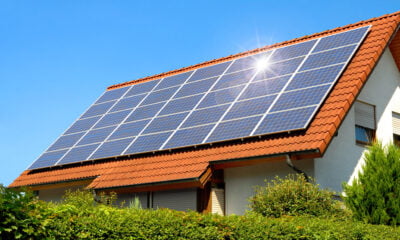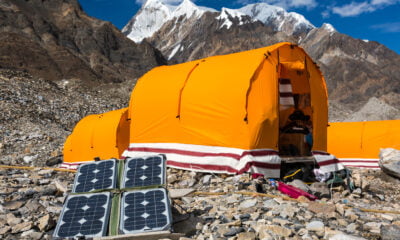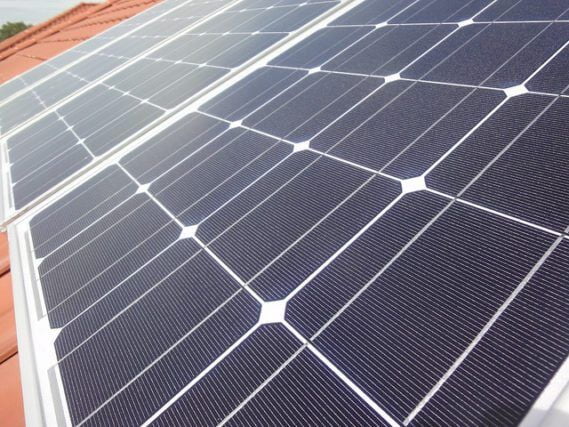
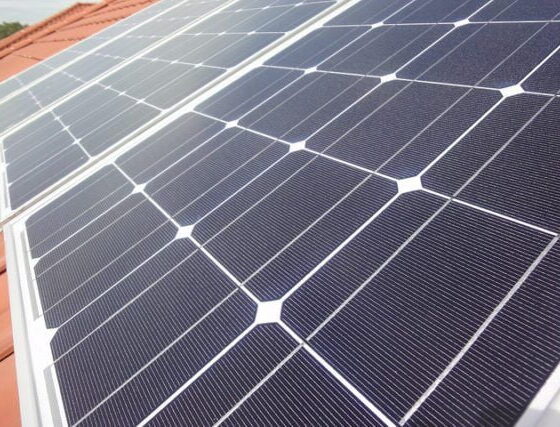
Energy
Solar Power: Are The Promises Coming True?
You see them everywhere in my neighborhood: Signs that declare that the homeowner has taken the plunge and “gone solar.”
The evidence is also on the roof tops and mounted on poles in backyards or behind an industrial building: The flat, blueish panels that look like futuristic windows, which are actually photovoltaic panels that turn the power of the sun – that would-be sunlight – into voltage, which we commonly call electricity.
While the signs encourage passersby to join in the solar power movement, the panels on roofs and in backyards – sometimes one or two, sometimes many thousand that cover acres of land – are becoming so commonplace that you don’t really have to explain them, anymore. Still, it wouldn’t hurt to review the basics of solar power. How good is it? Does it work? How do you make the conversion? Can you go all the way, getting all of your electricity needs from panels that you own? And what if your solar panels make too much electricity? What can you do with that?
Furthermore, how is this done? Can you build a photovoltaic system yourself, or is it best to purchase off grid solar kits that make the process so much easier?
Here are some basic answers, which I will begin by offering some small corrections. First of all, if you live in a city or a very rainy location, you might not see a blooming of solar panels in your neighborhood. Living in Apartment 14-M in a sky scraper in New York City hardly allows many options for a personal solar panel system for you or your neighbors. Nevertheless, the Solar Energy Industries Association projects solar power will grow 119 percent in 2016, a rate the association calls “staggering.”
What is fueling this run on solar panels, which are more prevalent, of course, in sunny, rural areas? Basic economics is one factor. If you own your own backyard photovoltaic power system at home, someday you will have produced enough power to allow you to scoff at people still paying electric bills. Another factor is global warming, a potentially catastrophic environmental problem that is pushing more and more people to take responsibility for their own carbon footprints (which means how much impact they personally support or make regarding fossil fuel pollution).
So, how good is photovoltaic technology? One of the joys of solar panels is the point that they have no moving parts. Yes, they are mounted on frames that allow the owners to orient them as directly as is recommended toward the sun. But the panels themselves just lie there, basking in the sun. According to Clean Technica, they will generally last 25-30 years, requiring very little maintenance along the way.
Of course, you can purchase enough panels to provide electricity for any size home, be it an off-grid tiny house or an oversized mansion. The first step for any homeowner is to first do a load analysis, which can be as simple as looking at your utility bills or calling your electricity provider to get a historical record of your home’s electricity usage.
You can also purchase an electricity meter, which will certainly come in handy for after you have gone “off grid,” when you are responsible for your own electricity production.
Typically, says Home Power magazine, a home uses 25 to 30 kWh per day, although a highly efficient home may use as little as six to 10 kWh per day.
This information brings to mind a key factor in the decision to go “off grid.” When I write “kWh,” it certainly helps to know what that means, which might be a good time to mention that knowing the basics of electricity is certainly a fundamental reality if you produce your own electricity. Off course, you can buy an all-in-one kit that makes the conversion easier, but the fact remains that the more you learn about the basics of electricity, the better off you will be.
A “kWh” is a unit of electricity use over time. It is a unit of energy, just as one BTU (British thermal unit) or one calorie is a unit of energy. With electricity, however, energy is best understood when it is explained with its relationship to time.
By comparison, kW is not a unit of energy, kW refers to power. When it comes to electricity, that means how fast something is generating or using the energy.
One kW is equal to 1,000 watts. You know for home lighting, homeowners generally use light bulbs that range from 10 or 20 watts all the way up to 150 watts or more. So 1,000 watts would be the power needed for 10 light bulbs of 100 watts.
You could certainly use a simple equation to understand how much electricity your home uses by counting light bulbs – a house with a refrigerator, a vacuum cleaner and electric heat, among other appliances, would use the equivalent of X number of light bulbs. It is best, however, to call an electrician or a solar power expert to arrange for a personal audit of your home so you know how large a system you might need with a conversion to solar power.


 Environment10 months ago
Environment10 months agoAre Polymer Banknotes: an Eco-Friendly Trend or a Groundswell?

 Environment12 months ago
Environment12 months agoEco-Friendly Home Improvements: Top 7 Upgrades for 2025

 Features9 months ago
Features9 months agoEco-Friendly Cryptocurrencies: Sustainable Investment Choices

 Features10 months ago
Features10 months agoEco-Friendly Crypto Traders Must Find the Right Exchange




